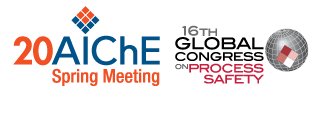

Although jet fires pose as a major hazard in the chemical processing industry, they are typically modeled with semi-empirical models developed using experimental results of natural gas. When applying these semi-empirical models to liquid fuels, it is typically assumed that all liquid is instantly vaporized upon discharge and combusted fully in the jet. However, depending on discharge fuel momentum, elevation, temperature, and liquid fuel properties, the reality is that a significant percentage of liquid fuel may fall to the ground and burn as a pool rather than contribute to the jet fire. As a result, the semi-empirical model may predict overly conservative results when used to model liquid spray jet fires.
In this study, a Computational Fluid Dynamic (CFD) model previously proven capable of predicting liquid jet fire flame shape, length, rain out condition, and thermal radiation level[1] was used to investigate how key factors can affect the percentage of liquid fuel that could combust in a liquid spray fire. Results were used to adjust a semi-empirical jet fire model to account for rainout. In addition, some example predictions using the revised semi-empirical model are presented.
[1] CFD Modeling of Liquid Jet Fire, J. Zhao and J. Rowley, 15th GCPS, New Orleans, LA, April 2019
Presenter(s)
Once the content has been viewed and you have attested to it, you will be able to download and print a certificate for PDH credits.
If you have already viewed this content,
please click here
to login.
Language
Pricing
Individuals
| AIChE Member Credits | 0.5 |
| AIChE Pro Members | $19.00 |
| Employees of CCPS Member Companies | Free |
| AIChE Graduate Student Members | Free |
| AIChE Undergraduate Student Members | Free |
| AIChE Explorer Members | $29.00 |
| Non-Members | $29.00 |
